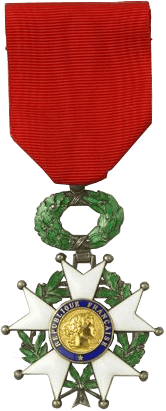Collar day
Collar days are designated days on which the collar forming part of the insignia of certain members of British orders of knighthood may be worn. Collars are special large and elaborate ceremonial metal chains worn over the shoulders, hanging equally over the front and back, often tied with a bow at the shoulders, with a distinctive pendant attached to the front.
Collar days in the United Kingdom
Collars are worn by members of the Order of the Garter, the Order of the Thistle; and Knights Grand Cross of other orders (the only active ones being the orders of the Bath, Saint Michael and Saint George, the British Empire, and the Royal Victorian Order; the Order of Saint Patrick, the Order of the Star of India and the Order of the Indian Empire are now in abeyance).
The collar can be worn on specific 'Collar Days' throughout the year.
Collar Days, in accordance with instructions of the Central Chancery of the Orders of Knighthood[1][2][3] are:
Collars are also worn when the Queen opens or prorogues Parliament, and a few other observances; including religious services of the various orders, and by those taking part in the Ceremony of Introduction of a Peer in the House of Lords.[1][2][4]
Collars are not normally worn after sunset, nor while mounted in parades such as the Trooping the Colour. Even if a bearer is entitled to more than one collar, only one may be worn at a time. The riband with badge can not be worn with the collar, but that of another order is allowed.[1][2]
References
- 1 2 3 4 5 6 7 8 9 10 11 12 13 14 15 16 17 18 19 20 21 22 23 24 25 26 27 28 29 30 31 32 33 34 35 36 37 38 39 40 41 42 43 "Chapter 8: Orders and Decorations, Medals and Medal Ribbons" (PDF). Naval Service Uniform Regulations. Royal Navy. May 2009. p. 8-3. BRD81. Retrieved 11 June 2010.
- 1 2 3 4 5 6 7 8 9 10 11 12 13 14 15 16 17 Lord Chamberlain's Office. Dress and Insignia Worn at His Majesty's Court, Issued with the Authority of the Lord Chamberlain. BiblioLife LLC. p. 135. ISBN 9781110350919. Retrieved 12 June 2010 – via Google Books.
- ↑ The London Gazette: no. 18798. p. 793. 26 April 1831. Retrieved 14 June 2010.
- ↑ "Feast, Collar and Red Letter Days". Cambridge University Heraldic and Genealogical Society. 2007. Archived from the original on 25 September 2006. Retrieved 12 June 2010.
- De la Bere, Ivan (1964). The Queen's Orders of Chivalry. London: Spring Books.
